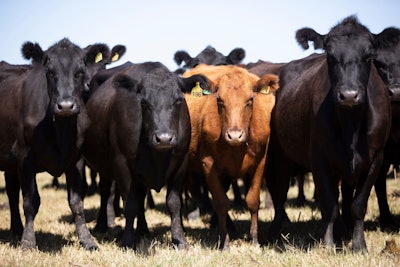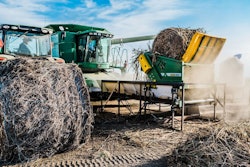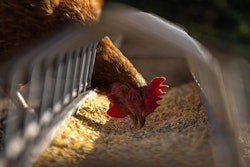
Supplemental feeds are an important part of beef cattle nutrition, especially in seasons of low-quality forage when cattle need more support to fulfill their nutritional requirements. Many producers, however, reduce costs by leveraging alternative feed options that can supplement lacking nutrients.
Alternative feed ingredients are byproducts derived from the processing of other agricultural commodities, making them available at fairly low costs, especially in regions where the original crop is grown.
“With alternative feeds, we’re looking for a specific nutrient in the ingredient our cattle aren’t getting from common feed sources, such as grass, grain and hay,” says David Whittington, Ph.D. ruminant nutritionist from South Dakota.
“For example, early in the season, when we’re starting to get green grass and then mature grass over summer, there is very little needed by grazing cattle. But, as we go into the fall and winter, the quality of the forage starts to decline. There is still energy contained in the dry matter, but there’s likely not sufficient protein to feed the microbial population in the rumen, which can digest fibrous structures and release energy for the animal. So, that’s where supplemental ingredients come into play.”
While the exhaustive list is long, below are five alternative feeds beef producers often use for supplementation.
1. Whole Cottonseed– Key Nutrients: Protein, Energy, Fiber
According to Whittington, whole cottonseed is a nutrient-dense option that’s high in protein, which is the component most often lacking in beef cattle diets. Cottonseed also contains ample energy and fiber to promote digestive health. Because of its triple-nutrient composition, whole cottonseed is also valuable in feedlot diets. There are several other cotton byproducts that are beneficial for cattle as well, such as cottonseed meal and cotton gin trash. While economical for those in cotton-growing regions, the product can be transported nationwide.
2. Sunflower Meal– Key Nutrients: Protein
Sunflower meal is a good, economical source of protein, especially for producers in the Northern Plains where most sunflowers are grown. However, the nutrient composition of sunflower meal can vary greatly depending on how they’re processed and, more specifically, on the degree of dehulling. The hulls are high in indigestible fiber, which lowers energy and affects the crude protein.
3. Distillers Grains– Key Nutrients: Protein
蒸馏器谷物乙醇连续的副产品ction and can be sold wet or dry. When shipped long distances, dried distillers grains are the more feasible option because they’re lighter and easier to store. Producers should be aware of the fat and sulfur content of distillers grains because they can cause adverse affects if fed in excess.
4. Hominy– Key Nutrients: Energy, Protein
Hominy is a byproduct of corn processing for human consumption and contains corn bran, germ and starch. Hominy is higher in energy, protein, fat and fiber than corn grain, so it’s often used as a replacement for corn.
5. Wheat Middlings– Key Nutrients: Energy, Protein, Phosphorus
Wheat middlings, also referred to as wheat midds, are byproducts of milling wheat for flour. They are high in energy, protein and phosphorus, and are moderately palatable. They also contain moderate levels of starch, which helps prevent depression of feed intake and digestibility of the forage. When fed at higher levels, the phosphorus content needs to be balanced with a calcium supplement. ■
Information provided byCotton Inc.





















![Optimix Andritz Scaled[1]](https://img.feedandgrain.com/files/base/wattglobalmedia/all/image/2023/05/optimix_Andritz_scaled_1_.645eb7a1ed508.png?auto=format%2Ccompress&fit=crop&h=112&q=70&w=112)